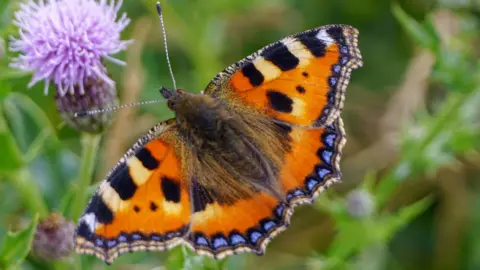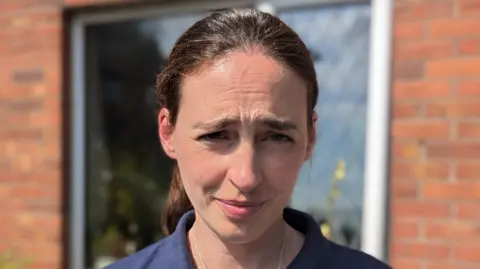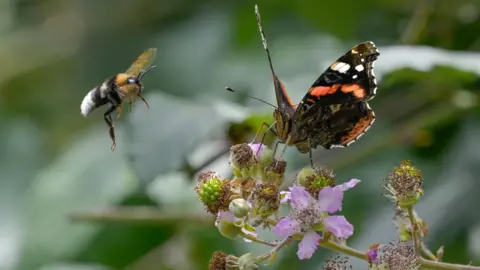 Getty Images
Getty ImagesMissing the sun this summer? It turns out we’re not the only ones.
Butterflies need dry weather and heat to flourish, something they just have not been getting enough of this year.
And that has conservationists worried.
With just one day left to go in the annual Butterfly Conservation’s Big Butterfly Count, participants have so far recorded the lowest number ever in the 14-year history of the biggest citizen science project in the UK.
Figures ‘not promising’
Inge Muller combines her love of moths and butterflies with her day job.
As a butterfly and moth recorder, she makes a mental note of the butterflies she sees as she does her County Londonderry postal round and fills in the results when she clocks off.
She says this year’s results are not promising.
“It is definitely not good,” she tells BBC News NI.
“In three weeks in July and August, there are so many days that there is nothing to report.”

Butterflies aren’t the only insects which are absent.
“We see the same in the numbers of moths,” Ms Muller explains.
“We monitor some species that are very numerous that you would expect to see 30 or 40 in one night in your moth trap, you are only seeing two or three.
“That tells you something, that some of the common species are not doing well.”
Conditions not favourable
Rosie Irwin of Butterfly Conservation says habitat loss, pesticide use and climate change are all impacting the population numbers.
This year’s fall in numbers has been exacerbated by the wet spring and late arrival of summer temperatures.
Butterflies also need some warm and dry conditions to be able to fly around and mate.

What can be done to help?
All is not lost.
Ms Irwin says we can all do something that will encourage butterflies into our gardens – whether that is small urban spaces or larger rural areas.
“Create a space where they can complete their life cycle if possible, it doesn’t have to be everything,” she says.
A nectar source can also act as a feed for caterpillars.
“Simple ones to grow are nasturtium for those cabbage whites, the small white and the large white butterflies, and things like sweet rocket for the orange tip butterfly,” she says.
 Getty Images
Getty ImagesMs Irwin says butterflies act as an indicator as to how healthy our ecosystems are.
“When butterfly numbers start to fluctuate, it is a warning sign of changes in habitat, changes in land use and changes in climate,” she adds.
“Feed, breed and shelter. Create your own mini wild space.
“Do that and we will start to see those numbers change”.

